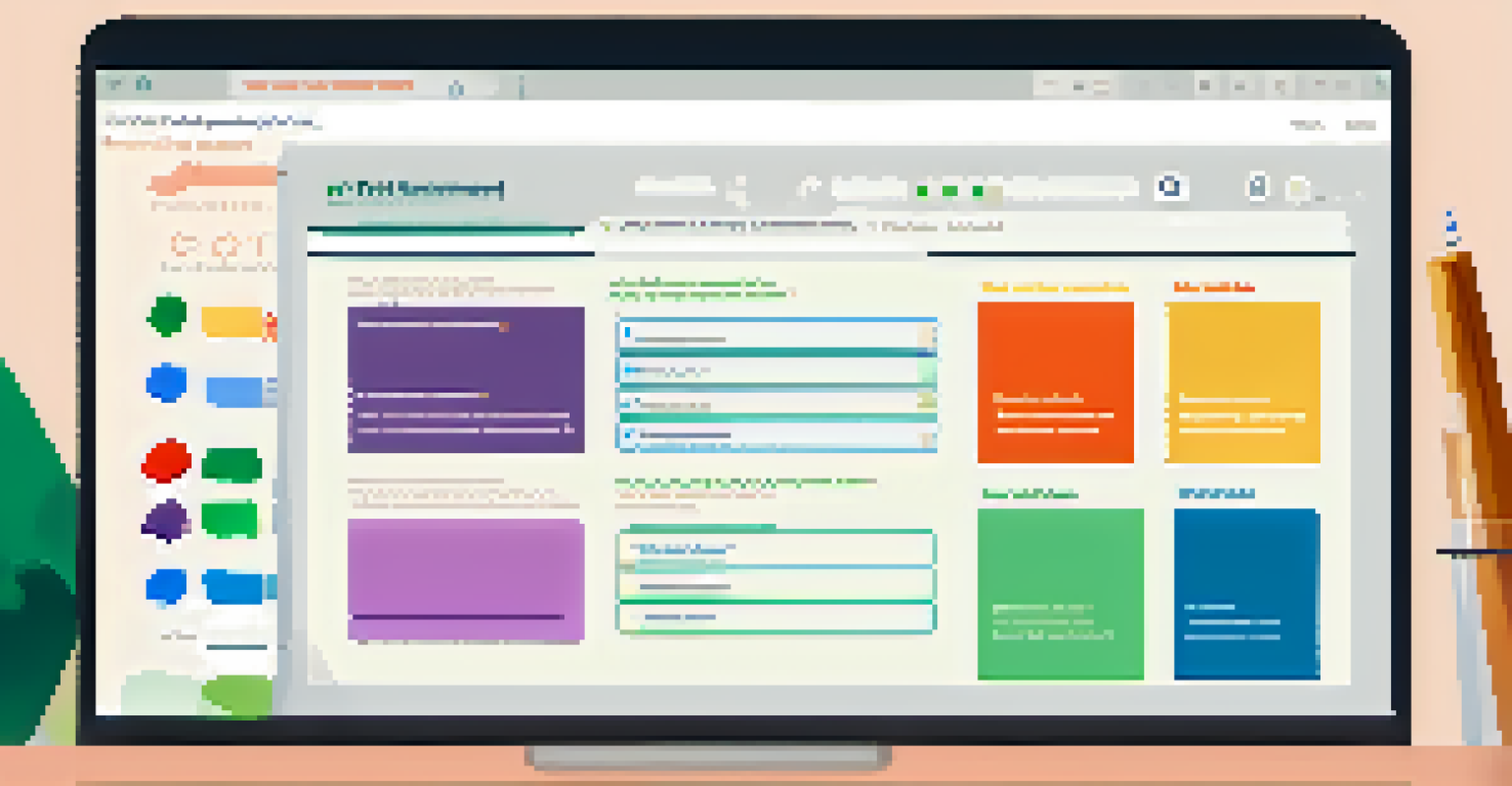Understanding Student Feedback Through Digital Assessment Tools

What Are Digital Assessment Tools and Their Importance?
Digital assessment tools are online platforms that facilitate the evaluation of student performance, making the process more efficient and accessible. These tools allow educators to create, distribute, and analyze assessments quickly, providing a streamlined method to gather feedback. By leveraging technology, schools can enhance their feedback mechanisms and address learning gaps effectively.
Feedback is the breakfast of champions.
In today's educational landscape, where technology plays a significant role, understanding these tools is crucial for both educators and students. They not only simplify the assessment process but also enable real-time feedback, which can be invaluable for improving student learning outcomes. This shift from traditional methods to digital solutions reflects a broader trend towards innovation in education.
Moreover, the use of digital assessment tools can foster a more engaging learning environment. They often come with interactive features, such as quizzes and polls, that keep students interested and motivated. When students feel engaged, they are more likely to provide honest and constructive feedback, further enriching the learning experience.
The Role of Student Feedback in Learning
Student feedback is a vital component of the educational process. It provides insights into how well teaching methods resonate with learners and identifies areas needing improvement. When students have the opportunity to share their thoughts, it creates a collaborative environment where both teachers and students can thrive.

Feedback can come in various forms, from surveys to open-ended questions, allowing students to express their opinions honestly. This input not only helps educators refine their techniques but also empowers students to take an active role in their education. When students see that their voices matter, they are more likely to engage deeply with the material.
Digital Tools Enhance Assessments
Digital assessment tools streamline the evaluation process, providing educators with efficient ways to gather and analyze student feedback.
Furthermore, regular feedback encourages a culture of continuous improvement. As students provide insights on what works and what doesn’t, educators can adapt their strategies accordingly. This iterative process ensures that learning remains relevant and effective, ultimately benefiting everyone involved.
How Digital Tools Collect Student Feedback
Digital assessment tools use various methods to collect feedback from students effectively. Surveys and quizzes can be integrated within the learning management system (LMS), allowing educators to gather responses seamlessly. This integration means that teachers can analyze feedback alongside grades, providing a holistic view of student performance.
The greatest danger in times of turbulence is not the turbulence; it is to act with yesterday's logic.
Additionally, many digital tools offer anonymity, encouraging students to share honest opinions without fear of judgment. This aspect is crucial, as it often leads to more candid feedback that can highlight issues that may not be apparent in a traditional classroom setting. When students feel safe to express their thoughts, the quality of feedback improves significantly.
Moreover, the data collected can be analyzed in real-time, giving educators instant access to student perceptions. This immediacy allows for timely adjustments to teaching methods, ensuring that educators can respond quickly to student needs. By utilizing digital tools, feedback becomes a continuous process rather than a one-off event.
Analyzing Feedback for Actionable Insights
The analysis of student feedback is where the true power of digital assessment tools shines. Educators can use data analytics features within these tools to identify trends and patterns in student responses. For example, if multiple students indicate difficulty with a specific topic, it signals that additional support may be needed.
By breaking down the data, teachers can pinpoint strengths and weaknesses in their teaching methods. This level of insight allows for targeted interventions, such as revisiting challenging concepts or offering supplementary resources. It transforms feedback from mere opinions into actionable strategies for improvement.
Feedback Fuels Collaborative Learning
Student feedback fosters a collaborative atmosphere, enabling educators to refine their teaching methods and empowering students to take an active role in their education.
Additionally, visual representations of data, such as charts and graphs, can make it easier for educators to digest the information quickly. This clarity enables faster decision-making and fosters a proactive approach to enhancing the learning experience. Ultimately, effective analysis of feedback leads to continuous growth for both educators and students.
Challenges in Collecting and Utilizing Feedback
While digital assessment tools offer many advantages, challenges remain in collecting and utilizing student feedback effectively. One common issue is ensuring that all students participate; low response rates can skew the data and limit its usefulness. Educators must find ways to encourage engagement and make feedback a priority in the learning process.
Another challenge is interpreting the feedback accurately. Students may have different perspectives influenced by personal experiences or biases, which can complicate the analysis. Educators need to consider the context behind the feedback and approach it with an open mind to draw meaningful conclusions.
Moreover, the sheer volume of feedback can be overwhelming. As educators sift through responses, it can be easy to overlook important insights. To counter this, implementing structured frameworks for analysis can help streamline the process and ensure no valuable feedback slips through the cracks.
Best Practices for Implementing Feedback Mechanisms
To maximize the effectiveness of digital assessment tools, educators should follow best practices for implementing feedback mechanisms. First and foremost, it's essential to communicate the purpose of feedback to students. When they understand how their input will be used to enhance their learning experience, they are more likely to participate actively.
Creating a routine around feedback collection can also be beneficial. Regular check-ins, whether through quick surveys or informal discussions, keep feedback fresh and relevant. This ongoing dialogue fosters a culture of open communication, where students feel comfortable sharing their thoughts at any time.
Challenges in Gathering Feedback
Despite their advantages, digital tools face challenges such as low participation rates and the potential for misinterpretation of feedback.
Lastly, educators should be responsive to the feedback received. Showing students that their opinions lead to tangible changes encourages future participation and strengthens the teacher-student relationship. When students see that their voices are valued, it enhances their investment in their own education.
Future Trends in Digital Assessment and Student Feedback
As technology continues to evolve, so will digital assessment tools and the ways we gather student feedback. Emerging technologies, such as artificial intelligence, are poised to revolutionize the feedback process. AI can help analyze large sets of data quickly, providing educators with insights that were previously time-consuming to uncover.
Additionally, advancements in user experience design will make these tools even more intuitive for students and teachers alike. A more user-friendly interface encourages higher participation rates and allows for smoother navigation through feedback processes. This accessibility is key to ensuring that feedback becomes an integral part of the learning experience.

Furthermore, the integration of gamification elements in digital tools can enhance engagement. By turning feedback collection into an interactive experience, students may be more inclined to share their thoughts. As we look ahead, the potential for innovation in this space is exciting and promises to create richer educational experiences.